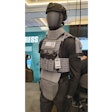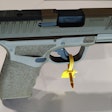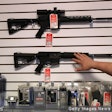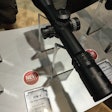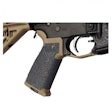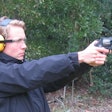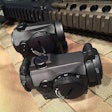The .22 Long Rifle (LR) is the most widely produced and popular cartridge in the world. Its smaller dimensions translate to a smaller bullet and case, less potent powder charge, and therefore lower cost.
It is also a rimfire cartridge, meaning the primer (the chemical compound used for ignition) is constructed into the copper or brass rim of the cartridge case. When struck by the firing pin of the firearm at the rim of the case, the chemical reaction takes place and so does the cartridge firing sequence.
Rimfire cartridge cases cannot be reloaded, unlike centerfire ammunition, where the primer is located in a segregated pocket and can be swapped out and "reloaded" with a fresh primer. Rimfire cartridges are therefore much cheaper than the aforementioned centerfire cousins.
When talking about expense, today's rising ammunition prices are not only a concern for the civilian, but also for law enforcement. Ammunition prices have recently skyrocketed and the ammunition allowances for most officers are too meager to cover the ammount of ammunition needed for meaningful practice. A 50-round box of 9mm, .40- and .45-caliber ammunition is well over $20 to $25. Compare that to a 500-round brick of .22 for the same price; you get 10 rounds of .22 for every round of centerfire. That makes practice very affordable.
Additional benefits of the .22 include the low-recoil characteristics of the cartridge. This builds muscle memory and confidence, particularly among novice shooters. It makes sense to shoot a round that is less punishing on the body, particularly when it's done hundreds of times in a row during a practice session. The world's best tactical, police and Olympic shooters will testify to the .22 being essential to their practice routine.
Most officers have incorporated the .22 at some point during their careers or may have become familiar with it during their youth through informal target practice and plinking. One common practice involves taking existing pistol platforms such as the Glock, 1911, Beretta, Sig or AR-type rifle platforms, and utilizing a conversion kit to swap out the uppers and magazines.
While this technique is effective from a price and muscle-memory perspective by utilizing the existing duty weapon's frame, it can also result in sensitivity to ammunition and lack of accuracy. This is because the original weapon was designed to be a centerfire platform and not a rimfire. No matter how hard you try, it's difficult to convert a family sedan into a race car. It was never meant to be used that way.
Many officers will say, "Why should I care? I'm not looking to be a bullseye shooter! I want general accuracy and not precision marksmanship—that's for SWAT!"[PAGEBREAK]
The above statement rings true for those who are satisfied with mediocrity. For those who want to improve their qualification scores and increase their confidence on the street, an effective next step is a dedicated target pistol designed around the .22 cartridge.
The grip angle is ergonomic and generally mimicks that of the 1911 platform. The barrel is a heavy bull barrel designed to handle rapid, ongoing follow-up shooting that generates a lot of heat. The bull barrel also gives the pistol a stable and well-balanced feel. Most dedicated target pistols also have intergrated or detachable accessory rails to accomodate red dots, optics and scopes, while still retaining their adjustable sights.
Finally, target pistols really outshine conversion kits in the area of the trigger. While the conversion kit doesn't allow adjustments to a duty weapon's existing trigger, dedicated target pistols are specifically built with a light single-action trigger ranging from 2.5 to 5 lbs. Most duty pistols far exceed 5 lbs., and many agencies mandate 6 to 10 lbs. for Glocks.
This makes practice with a Glock .22LR conversion kit far less palatable. With the target pistol's light trigger, employing the shooting fundamentals of good trigger control becomes more reinforced and pleasurable.
Accuracy is improved when the trigger pressure is applied in a smooth rearward motion that a lighter trigger permits. There's also a beneficial psychological effect of improved accuracy. Seeing accuracy improve on paper targets improves confidence and motivation.
Let's not forget about the friendly price tag of these pistols.
Great .22 target pistols can be had for less than $500. The most widely used models by professionals and civilians are the Ruger MKIII, Ruger MKIII 22/45, Browning Buckmark, Beretta Neos, Smith & Wesson models 21 and 40, as well as Walther 22 target pistols.
My favorite model is the Ruger MKIII 22/45 because it sports a heavy flutted bull barrel and is built around a frame that mimicks the ergonomics of a 1911's grip style and angle. I have also found this pistol capable of digesting a steady diet of most .22 ammunition brands. It is capable of great accuracy and can take a lot of punishment.
Related:










